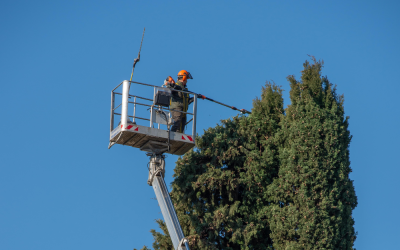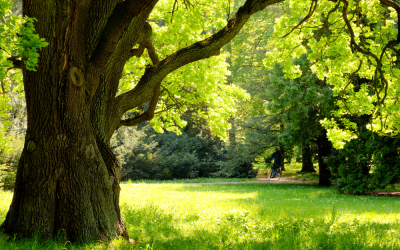In the world of arborioculture (or as it’s otherwise known – tree maintenance), you might come across certain words you don’t recognise. Whether you are a novice gardener or a seasoned professional, if you are responsible for the upkeep and care of trees, understanding the terminology involved can be useful. In this article, we’ll look at a method of pruning known as pollarding. But what is tree pollarding – and what does pollarding a tree mean?
What Pollarding Is
Pollarding (not to be confused with topping) is a pruning method used to limit the height of trees and shrubs and promote future growth. Used mostly on London plane and common lime trees, it can also be used on other species such as ash, elder, oak and some species of acer.
Why It Is Used
Pollarding is used to prevent animals from grazing, as well as for safety reasons, for instance where tree branches come into contact with electrical lines or other structures.
Pollarding also has a number of benefits to the tree itself. This process tends to keep trees in a state of arrested development, increasing longevity and reducing the weight and windage in treetops. It can also help reduce the risk of disease or fungus.
When To Pollard
Once a tree has reached it’s desired height, you can start pollarding. This usually involves leaving a trunk supporting three or five branches, which are cut back to the required length.
The best time of year to pollard varies depending on the species: some trees respond well in winter while the tree is dormant, while in other cases summer pollarding is preferred, however it’s worth noting that this may result in poor growth due to drought, scorch or heavy shade cover from nearby trees.
In general, avoid pollarding in autumn, as this is when decay fungi can set in, affecting pruning cuts – although in springtime it’s also a good idea to avoid pruning acer trees, as these can be prone to bleeding sap.
Maintenance
A tree will then require annual pollarding to keep the tree as short as necessary, although a minimum of five years is also recommended depending on the species (ask your arborist for advice.)
Branches should be pruned just above previous pollarding cuts – and in some situations, for example where more leaf cover is required, some branches may be left intact, or cut back to create a side branch.
Following this, the tree should then be observed in case any further maintenance is required.
Effects
Tree pollarding can have an effect on woodland growth, either increasing or decreasing it depending on the light available as a result of the process.
Pollarding can cause branches to break and fall, which is especially hazardous in the case of species that may become heavy after several decades of pollarding lapses, and can break away in windy weather.
In cases like these, it is advisable to maintain a regular cutting cycle with help from a professional.
Overgrown Pollarded Trees
In some instances, an overgrown pollard might need further surgery to remove any larger parts of the tree at greater heights.
This can be done by removing any weak or spindly branches, or if necessary, removing all the branches that have developed from old pollard stumps. (London planes respond well to this).
Horse Chestnuts will require cuts at a higher point, rather than to original pollards, to prevent the exposure of large amounts of old wood. This then creates a second set of pollard heads.
In other species like hornbeam, ash and some oaks, it is advisable to keep some of the branches.
Ask A Professional
You may wish to consider whether branches can be thinned out and/or reduced in length to create a tree-like frame that restores the pollard to a tree. Since pollarding can prove expensive in the longterm, a good tip is to plant a tree small enough that it will fit the allotted space with minimal pruning required.
Alternative pruning methods for large trees also include crown reduction or thinning – but as always, ask a professional for advice before attempting any work.
While many routine garden jobs require little-to-no training, pollarding can be a dangerous process involving the use of work at height and equipment such as chainsaws that could result in serious injury or even fatality if used by an untrained and inexperienced person.
For this reason, we recommend that you contact your local tree surgeon Stockport or tree pruning Manchester specialist to help you stay safe while caring for your trees.



